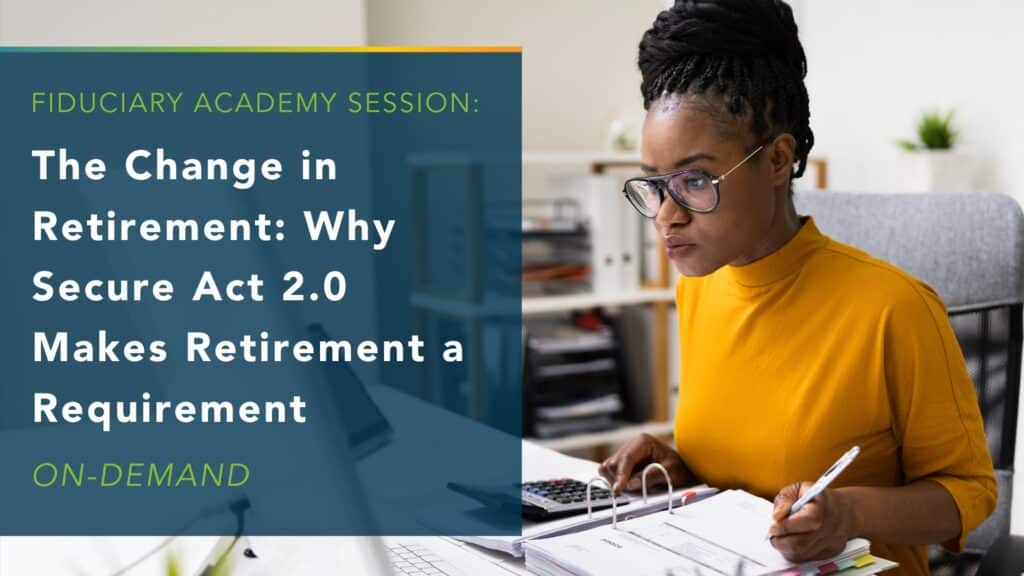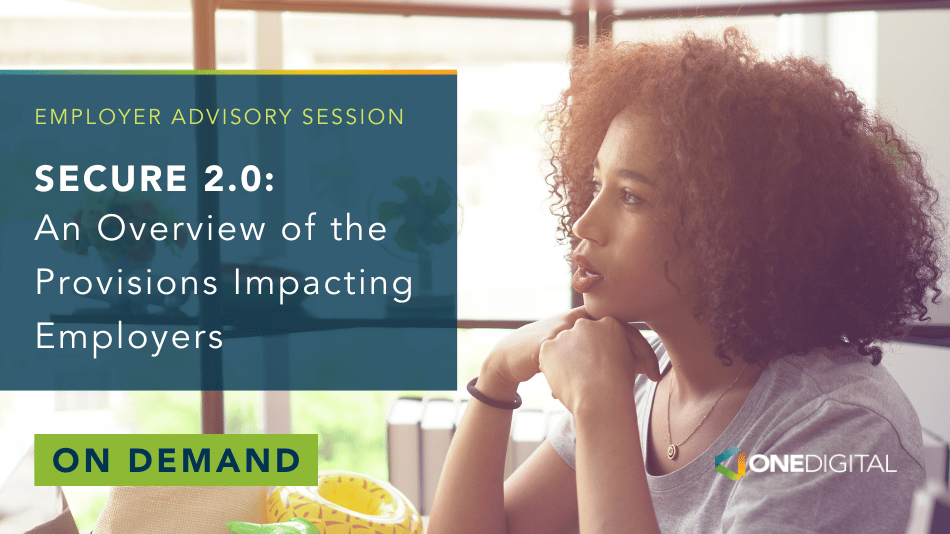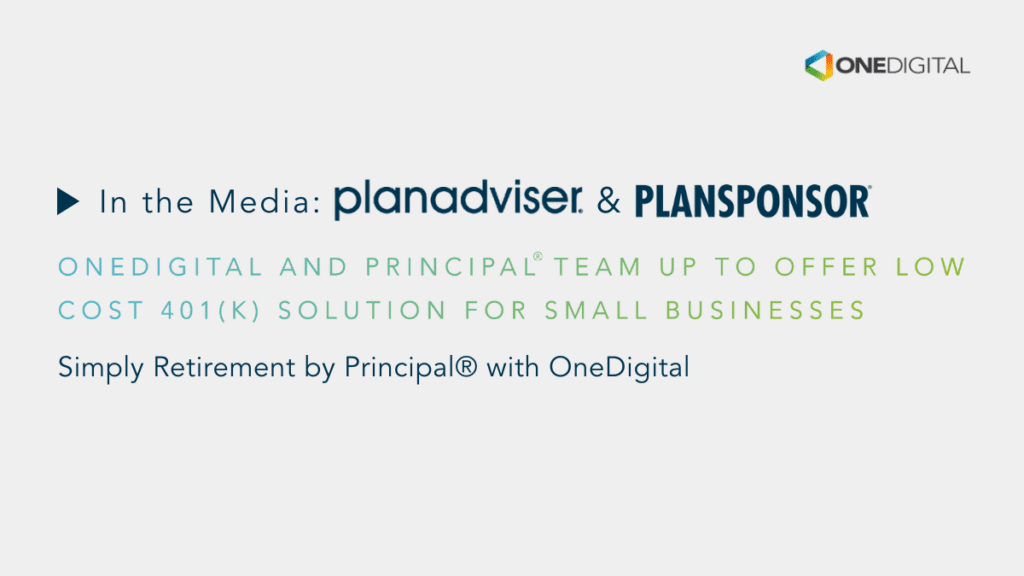Better Benefits, News
The Biggest SECURE 2.0 Act Takeaways Impacting Employers
The Biggest SECURE 2.0 Act Takeaways Impacting Employers
SECURE Act 2.0 is currently and will continue to significantly impact regulations related to employer-sponsored retirement plans.
While most provisions of SECURE 2.0 will not take effect immediately, the legislation promises to alter the retirement landscape for millions of Americans and the businesses that employ them.The SECURE 2.0 Act of 2022("SECURE 2.0"), as included in Division T of the Consolidated Appropriations Act, 2023, is centered around helping U.S. workers save for retirement. SECURE 2.0 looks to expand the number of Americans with access to retirement savings vehicles while also helping to increase the amount that they are able to save. Many of the provisions address reasons why people are not saving and provide new mechanisms and incentives to boost both employer and employee contributions.
Here are some of the provisions that could have the greatest impact on retirement plans moving forward:
Starter 401k
One of the major pitfalls that prevent Americans from saving for retirement is a lack of accessibility and inclusion. For starters, there are 57 million Americans without access to an employer-sponsored retirement plan or traditional pension. These employees are unable to save because they have no purpose-built vehicle to do so. SECURE 2.0’s starter 401k provision will allow employers with no retirement plan to offer a low-cost starter 401k or a safe harbor 403(b) plan. The starter 401k will require all employees to be enrolled in the plan at least at a 3% compensation deferral rate.
While the SECURE 2.0 legislation is filled with significant enhancements, the Starter 401k provisions may have an even more significant impact than the previous Pooled Employer Plan Legislation on expanding access to 401k plans for American workers currently without access to an employer-sponsored retirement plan. The American Retirement Association reports that this provision alone could provide access to 19 million more Americans.
With state-sponsored retirement plans and the new pooled employer legislation, the starter 401k becomes another way for employers to offer a sponsored plan. This increased optionality could significantly impact those 57 million Americans without coverage.
Long-Time Part-Time Employees
Approximately 17% of the U.S. workforce is comprised of part-time workers, which equates to 25 million employees. This group of employees has been underrepresented and underserved regarding retirement savings options.
The continued inclusion of long-time part-time employees will play a significant role in further expanding the coverage to a population of the workforce that typically goes underserved. Tightening the rules around excluding long-time part-time employees could go a long way in closing the gender equality gap when it comes to retirement savings, as women are more likely to work in part-time jobs that do not provide retirement plans.
The majority of part-time workers are not primarily motivated by compensation and prefer the flexibility of a part-time position. Sixty-three percent of part-time workers are female. Many are choosing these positions because of family or personal reasons. The SECURE 2.0 legislation will now require employers offering retirement benefits to make them available to part-time employees with either one year and 1,000 hours of service or two consecutive years and at least 500 hours of service each year.
Emergency Savings
The COVID-19 Pandemic showed a serious lack of emergency savings among American workers. According to the Consumer Financial Protection Bureau, only 9% of Americans have at least one month of emergency savings. This lack of savings often forces people to dip into their retirement savings to help pay for unexpected expenses. A provision of the new law will allow employers to offer the option of a pension-linked emergency savings account to their non-highly compensated employees in order to combat this issue.
This much-needed provision is intended to help employees and to nudge service providers to offer solutions for emergency savings. Congress has been attempting to solve this issue by offering additional distribution options for employees. Instead, the new legislation offers a possibly more effective “sidecar” emergency saving account, allowing for automated emergency savings and directly addressing the root cause of leakage.
Although emergency savings solutions existed before the passage of SECURE 2.0, there were issues with offering these types of solutions to employees due to the inherent challenges of providing liquid, penalty-free savings in a qualified plan structure. The new legislation provides a clear mechanism for offering emergency savings vehicles in conjunction with employer-sponsored retirement plans.
These are some of the most important pieces of the SECURE 2.0 legislation, which stands to impact millions of American workers and the businesses that employ them. Plan sponsors are encouraged to continue monitoring developments and review the full text of the legislation to stay compliant with these new regulations. In the coming weeks, our advisers will continue to offer commentary on the potential impact SECURE 2.0 may have on your business.
SECURE 2.0 will have a lasting impact on how Americans save for retirement and will open opportunities to many that were not previously available. This legislation will hopefully create better retirement outcomes for employees everywhere by offering more flexibility and greater saving opportunities within employer-sponsored plans that so many depend on.
To better understand how SECURE 2.0 may impact your plan and your employees, connect with a OneDigital Retirement Adviser for a customized plan review.
Investment advice offered through OneDigital Investment Advisors LLC, an SEC-registered investment adviser and wholly owned subsidiary of OneDigital.




